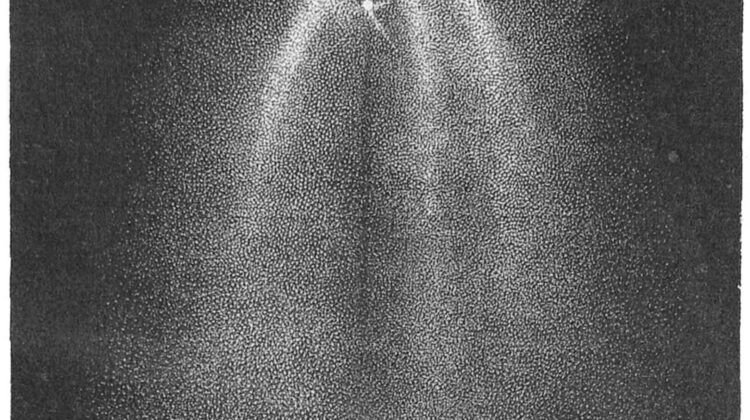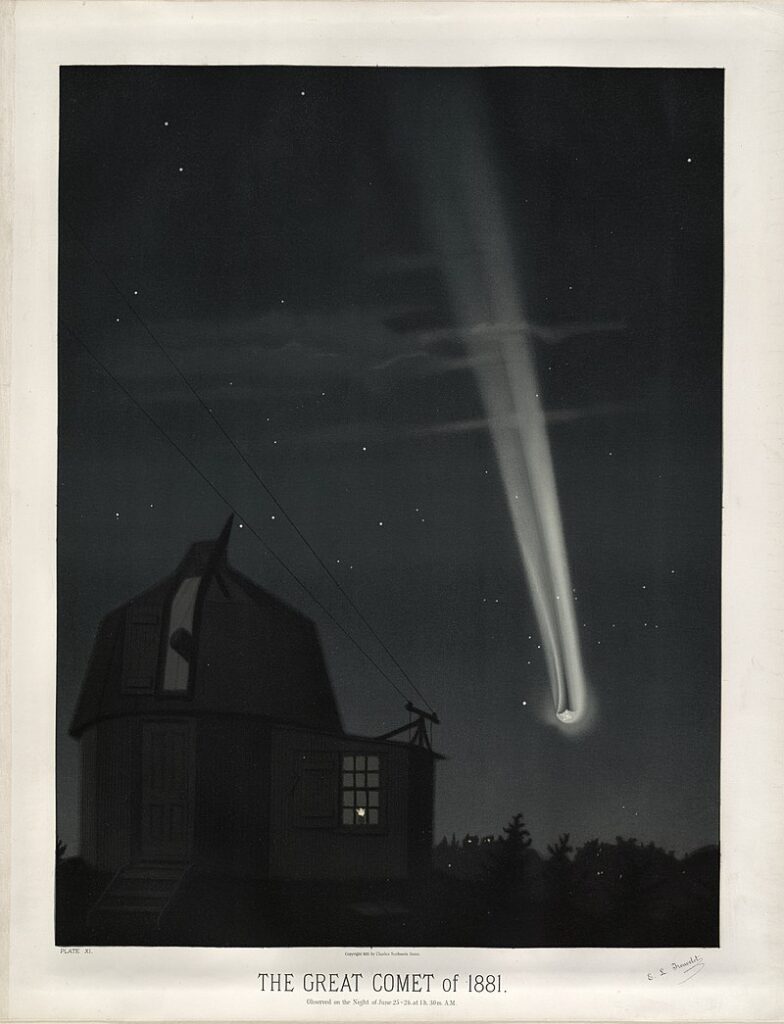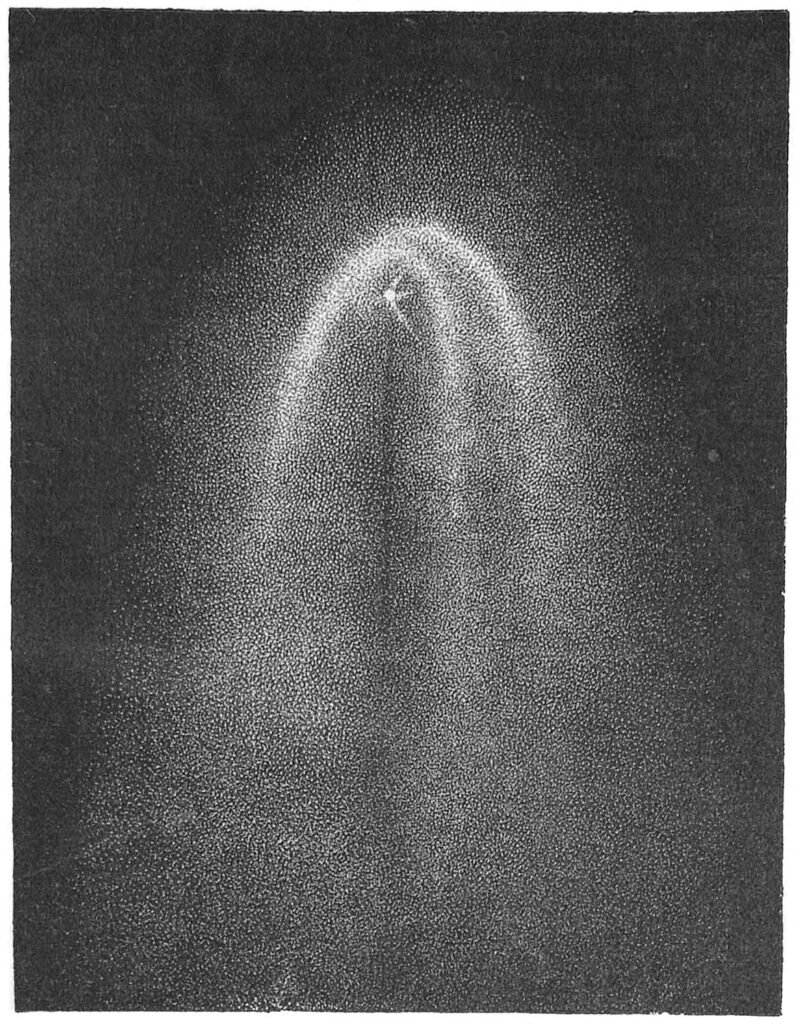
C/1881 K1 (also called the Great Comet of 1881, Comet Tebbutt, 1881 III, 1881b) is a long-period comet discovered by Australian amateur astronomer John Tebbutt on 22 May 1881[2] at Windsor, New South Wales. It is called a great comet because of its brightness at its last apparition.[3]

Observations
On June 1 Tebbutt found the length of the tail to be 8° 38′. The comet was observed in the southern hemisphere from its discovery to June 11; it then became visible in the night sky of the northern hemisphere by June 22 as a spectacular object to the naked eye.[4] On June 25 the tail’s length was about 25° and the brightness of the nucleus was magnitude 1.[5][6][7] The comet was still visible to the naked eye in August but by the end of the month the tail was not discernible.[5] In the Alps at an altitude between 1000 and 2000 meters, Camille Flammarion observed the comet until the beginning of September.[8] The last successful telescope observation of the comet was on 15 February 1882.[5]
For Tebbutt’s Comet of 1881, Henry Draper took the first wide-angle photograph of a comet’s tail and the first spectrum of a comet’s head.[9] Andrew Common used his Newtonian reflecting telescope with 36-inch mirror to photograph the comet.

Tebbutt’s account
In his Astronomical Memoirs in the section entitled 1881, John Tebbutt gave an account of his discovery:[10]
This year, like 1861, was signalised by the discovery of a great comet. While scanning the western sky with the unassisted eye on the evening of May 22, I discovered just below the constellation Columba a hazy looking object which, from my familiarity with that part of the heavens, I regarded as new. On examining it with the small marine telescope previously referred to in these memoirs, I found it to consist really of three objects, namely, two stars of the 41⁄2 and 51⁄2 magnitude afterwards identified at γ1 and y2 Cæli, and a head of a comet. I could not find any trace of a tail, but on the 25th it exhibited a tail about two degrees in length. Immediately on its discovery I obtained, with the 41⁄2 equatorial, eight good measures of the nucleus from one of the bright stars just mentioned. On the following day I notified the discovery to the Government Observatories at Sydney and Melbourne. A series of filar micrometer comparisons was obtained at Windsor, extending from the date of discovery to June 11, when the comet disappeared from our morning sky and became an object for the northern observatories. …

Leave a Reply